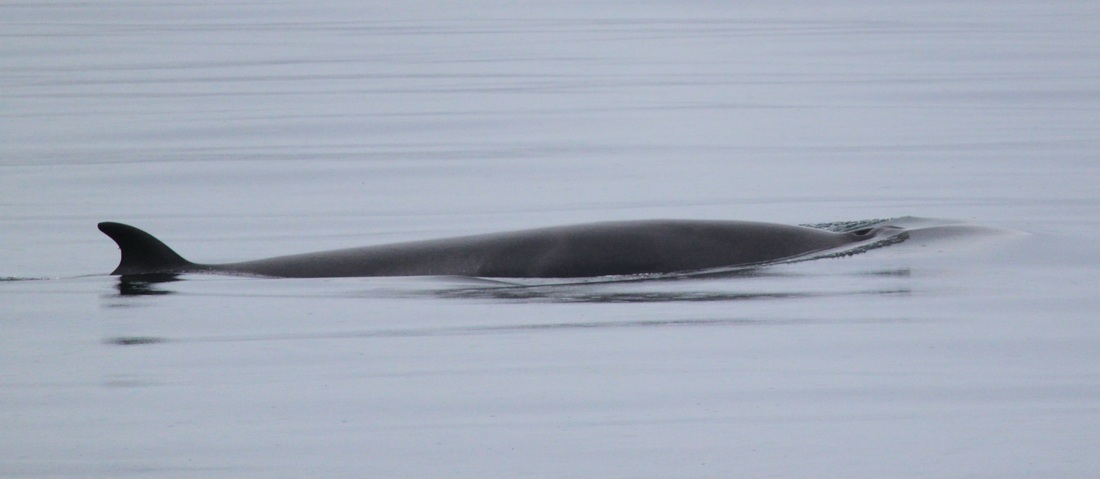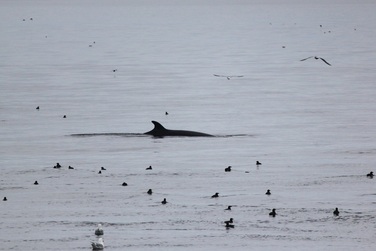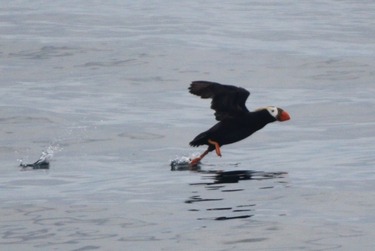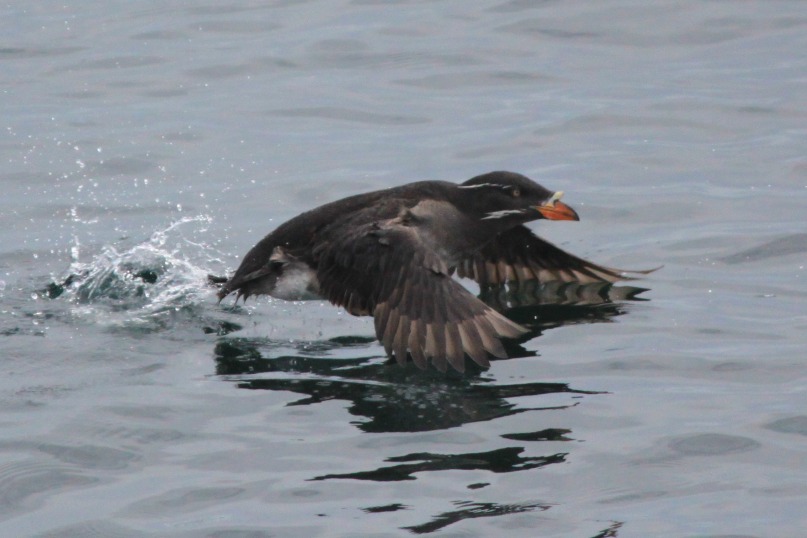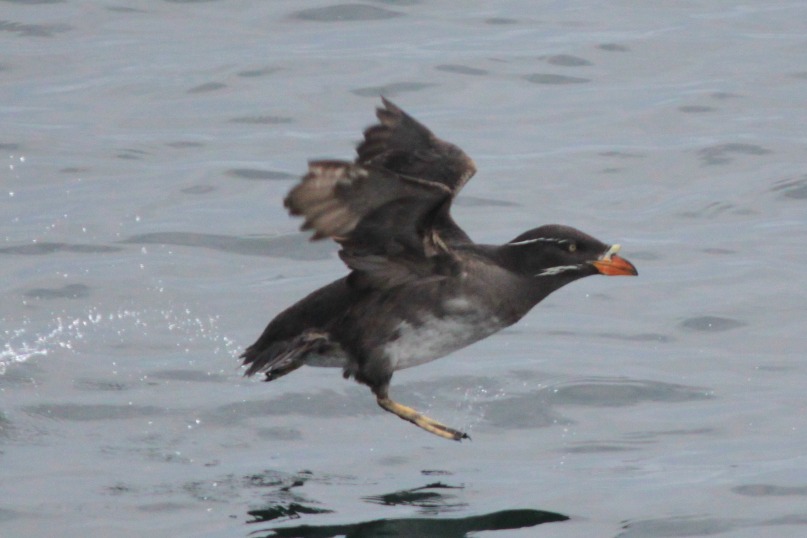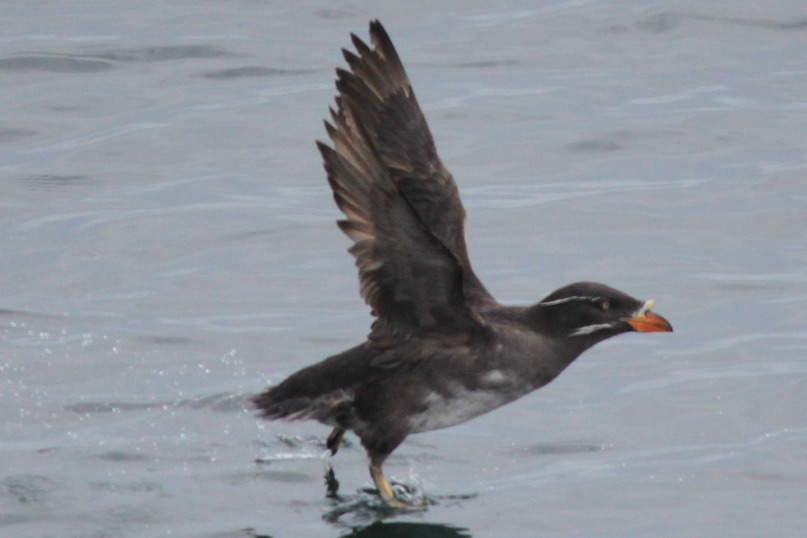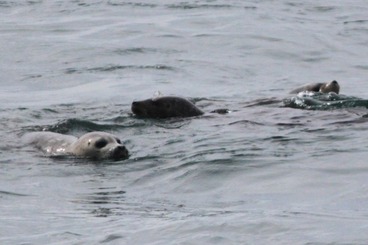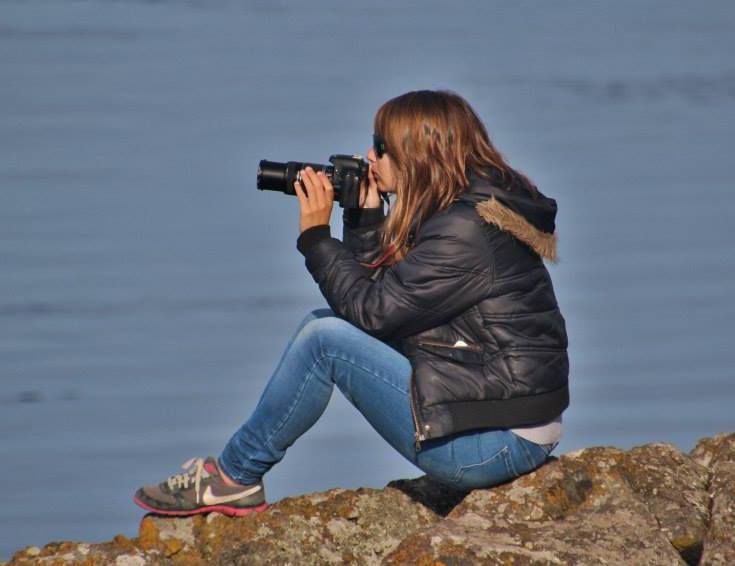At up to thirty five feet long, these marine mammals are a little larger than the orcas. The topside of a minke whale body is brown or dark grey in color, with a light chevron-like pattern that crosses over the back, just behind the head, which is pointed. The underside of the whale is all white, and white bands can be seen on the tiny pectoral fins. The dorsal fin curves back sharply and is about a foot tall. Each dorsal fin shape is unique to individuals as well as any scars on the body. These whales eat small schooling fish like herring, and sandlance and upon diving they do not show their flukes like some other baleen whales. We often see minkes alone, or in small groups, which is typical for baleen whales. Minkes may not be very social but they are curious; we have had encounters were they come right over to the boat and check us out.
On this day we had four different minke whales at Salmon Bank, on the West side of San Juan Island. I was excited to see that one of the minkes was the same one we had seen following orcas from the L12 matriline around the day before.
Please do not use my photos without permission. Just ask :)
